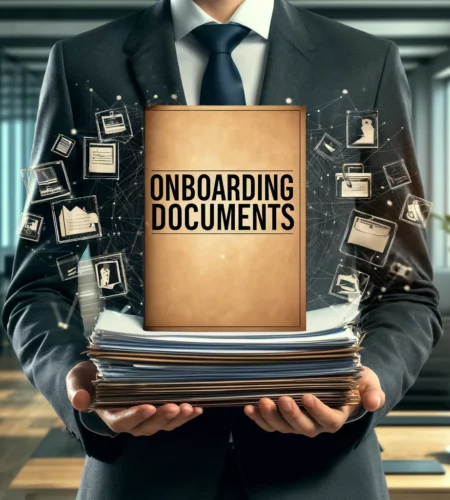Every company faces challenges when it comes to onboarding. It involves helping new team members settle into their roles and become familiar with the organization. A key element of onboarding is using the onboarding documents. These resources offer information to employees, helping them grasp their duties, navigate company policies and procedures, and blend in smoothly with the team.
Table of Contents
1. Significance of Onboarding Materials
Effective onboarding calls for an approach that includes communication, proper training, and easily accessible information. Onboarding documents play a role in achieving these goals. From employee handbooks and training guides to forms and policies, these materials contain knowledge that empowers employees to start off strong.
Using cloud HR software UK or country based other software can significantly streamline the on boarding process by automating document management. Instead of handling paperwork manually, companies can now create, send, and sign all necessary policies, contracts, and documents in one place. This not only reduces administrative work but also ensures that new employees have immediate access to everything they need. Automating these tasks speeds up the process, keeps everything organized, and allows HR teams to focus on more important aspects of welcoming and training new hires, making the entire experience smoother for everyone involved.
2. Employee Guidebooks
Employee guidebooks are commonly given to hires during onboarding. These detailed documents outline an organization’s goals, values, expectations, rules, instructions, and benefits. By referring to this resource during their time at the company, employees can gain an understanding of what is required of them and how they can contribute effectively.
3. Training Guides
Training guides are aids used for job training or ongoing skill enhancement. These guides contain instructions on how to carry out tasks or effectively utilize software applications. By following a training manual at their own pace or referring to it as needed, employees can learn independently while also having a point of reference for clarification.
4. Forms and Policies
Companies typically have a variety of forms that need to be filled out during the onboarding process, such as tax forms (like W-4s), deposit forms, confidentiality agreements, job description acknowledgment forms, and more. Onboarding paperwork helps streamline this process by ensuring that employees have all the documents from the start.
5. Accessible Information
Ensuring accessibility is an aspect of onboarding materials. They should be well structured, easy to navigate, and available in formats (such as print and digital) so that employees can easily access them. Incorporating elements like hyperlinks or searchable PDFs improves user experience. Speeds up information retrieval.
6. Digital Transformation and Onboarding Materials
With the increasing use of technology in workplaces, many organizations are moving towards formats for their onboarding materials. This transition brings advantages like reduced paper consumption, enhanced efficiency, simplified tracking and updating procedures, and improved accessibility for remote or distributed teams.
7. Evolving Documents
The onboarding materials should adapt to the changing requirements of a company. Regular evaluations and reviews ensure that these materials are updated with any policy or procedure changes. By gathering feedback from employees who recently completed the onboarding process, organizations can pinpoint areas for enhancement. Guarantee that future hires receive resources right from the start.
8. Checklist for Onboarding Documents
To ensure an onboarding process, creating a checklist of documents that new employees should be provided with is beneficial. This checklist may include items like the employee handbook, role-specific training guides necessary, forms and paperwork, and other relevant documents. By offering a comprehensive list upfront, HR teams and new hires can clarify what’s required for an onboarding process.
9. Engaging Onboarding Documents
While the content of onboarding materials is crucial, presenting this information in an equally significant way is equally important. Adding visuals, infographics, or videos to these materials can enhance employee engagement and comprehension. When organizations combine appealing elements with concise text, they can effectively convey important information to new employees.
10. Expanding Beyond Onboarding Documents
Although onboarding documents are crucial for employee integration, they should not be the focus of the onboarding process. To truly support hires’ success and development within the organization, it’s essential to move beyond providing static documents. Investing in mentorship programs, assigning buddies or mentors to employees, and conducting regular check-ins with managers or HR representatives are effective ways to offer continuous support during the onboarding journey.
In Summary
Onboarding documents play a role in preparing employees for success from day one. By offering employee handbooks, detailed training manuals, necessary forms, and defined policies, organizations can establish a strong foundation for newcomers. Furthermore, by embracing user information formats and adapting these resources based on feedback and organizational changes over time, businesses can improve their onboarding process while providing resources for current and future employees.
